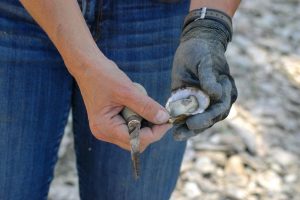Last summer, scientists met at the University of Washington to address alarming findings concerning the rapid acidification of the world’s oceans. Experts at that symposium warned that wildlife in the Salish Sea, from salmon to shellfish, may start to see significant effects from changing water chemistry within the next 10 to 20 years. This article summarizes the symposium’s key findings and was commissioned and edited by the Washington Ocean Acidification Center which hosted the gathering.
Ocean acidification, which threatens sea life throughout the world, is affecting Pacific Northwest waters — including the Salish Sea — sooner than most regions around the globe, according to ongoing studies.
Even more alarming is new research now causing oceanographers to predict that the changes in ocean chemistry will soon pick up the pace, causing the rate of ocean acidification to accelerate.
“If we continue down the road we are on, we will see very dramatic changes in the next 10 to 20 years,” said Richard Feely, senior scientist at NOAA’s Pacific Marine Environmental Laboratory in Seattle.
Ocean acidification, caused by the absorption of more and more carbon dioxide from the atmosphere, can affect the survival, growth and behavior of all kinds of sea creatures. New evidence suggests that ocean acidification impairs the sense of smell in salmon, impedes growth in herring and other critical prey species, and can affect plankton populations, thereby altering the food web.

Most notable in the struggle for survival amid ocean acidification are species that form shells of calcium carbonate — including succulent oysters that support a vast industry, solitary corals that live in local waters, and a wide variety of tiny animals that serve as food for others.
These new predictions are the result of a growing understanding of the chemical changes taking place in different parts of the ocean, said Feely, who presented the latest findings during a 2019 Ocean Acidification Science Symposium in Seattle. Of particular concern, he noted, is what could become a dangerous weakening of the ocean’s buffer system — an elegant set of chemical reactions that have so far inhibited an even faster rate of ocean acidification.
Researchers at the symposium also presented new findings about the effects of ocean acidification on salmon, herring, Dungeness crabs, plankton and eelgrass, while others talked about future conditions and what can be done to turn things around.
